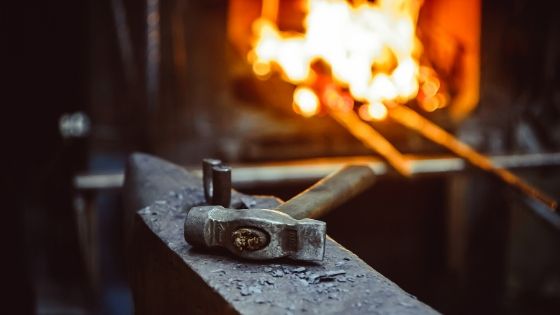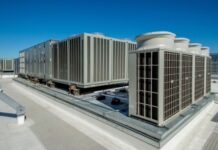Forging is a production procedure that involves changing the form of metal by heating and applying external propulsion (forces). Forging involves the use of a heated metal, which is a preferable option because heat makes it a lot easier to reshape the heated material in comparison to the use of cold metal. However, this doesn’t mean that forging cannot be done on cold metals, and in fact, there are innumerable forging operations that involve the use of cold metals.
That said, it’s worth noting that there are two main types of forging operations – drawing out and upsetting.
- Drawing out involves the elongation of the metal, hence the reduction of the metal’s cross-sectional area.
- Upsetting, on the other hand, works inversely to drawing out, and the cross-sectional area of the metal/ workpiece is increased significantly, as the length of the metal reduces.
Forging operations aside, there are several types of forging – Smith forging, Drop forging, Machine forging, open-die forging, seamless rolled forging, pot-die forging, and Press forging.
But regardless of the method of forging used or the forging operation, forging processes come with a number of advantages, covered below. If you have questions about what type of forging you need, check out https://www.qcforge.com/home.
1. It yields stronger components
One of the main reasons why forging is one of the most popular mechanical manufacturing processes with applications in just about all industries, including the aerospace industry, has to do with the fact that forging enhances the mechanical properties of the metal undergoing forging. The forged metals always have higher ductility, as well as a high level of impact resistance. The top reason for this is that forging will refine and direct the metal’s grain flow depending on the shape of the metal in question. Thanks to the directional grain flow of the forged metal, both the mechanical and the metallurgical properties of the metal are enhanced, which is why the structural integrity of forged metal is unbeaten by all other transformational processes. It’s also worth noting that the forging process yields high-strength metals because it removes all gasses, porosities, as well as internal cavities, which would otherwise result in faults from impact, fatigue, or stress.
2. Forging is possible on a wide range of steels
Just about all metals can be forged, including the ferrous and the non-ferrous metals. Also, all types of steels can be forged, whether you are looking at stainless, alloy, superalloy, carbon, aluminum, brass, copper, or titanium.
3. Significant Money Savings
By reducing the weight of the metal, forging results in significant savings in costs. There’s also the fact that the forged piece of metal will have fewer excesses meaning there will be even fewer machining hours, as well as fewer materials needed to clean the forged metal when the forging process is complete.
4. Variations in shapes and sizes
Forging is also advantageous since it enhances the versatility of designs. Forging allows metals to be forged from simple bars and rings into some of the most complex metal pieces, all designed to meet different needs.
5. Great metallurgical properties
Forging removes cavities and internal voids in the metals undergoing forging, hence a reduction of shrinkage, as well as porosity, which would affect the structure and performance of the metal.




















